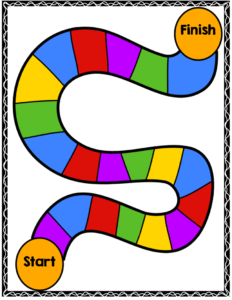
Let’s start with one of the most commonly engaging activities: games. Whether it’s a board game or a video game, games engage both students and adults. If we deconstruct the elements of a game, they aren’t that difficult to recreate. All games, from a simple hand of Solitaire to the most intricate levels of Mindcraft have the following characteristics that make them engaging:
- a compelling goal or destination
- a set of rules or challenges that must be overcome
- a clear indicator of where you are against your goal
These elements create an authentic motivation to learn that is driven by a desire to reach a goal. Learning feels natural and fun. Repetition is not seen as monotonous, but rather, it is embraced as the quickest way to master skills and bring you closer to a goal. Feedback is ongoing and immediate so that progress is rewarded and setbacks have tangible consequences.
If we apply these basic elements of a game to our instruction, we immediately transform a lesson plan into a learning experience. Here’s how it might play out with a 1st grade Science lesson.
First, restate your learning objective as a goal or destination.
Your mission is to prove that vibrating materials can make sound and that sound can make materials vibrate. When you think you have proof, you must bring your evidence to the judge (designate yourself, a parent volunteer, another teacher, or your principal as a judge). Once you have sufficient evidence to convince the judge, you get your reward.
Next, lay out the rules that dictate how students can get to their goal.
Using only the materials at your table (e.g., a balloon, a speaker, a piece of paper, a rubber band, and a box), see if you can I create a sound by vibrating materials. Then see if you can get a sound to make something vibrate. Once you get it to work, I will give you 2 articles and 2 websites. Use your findings and the additional resources to create a case to present to the judge.
Finally, provide a visual indicator of progress toward the goal.
Give each team a paper with a circle divided into 4 “slices.” Tell students they can color in one “slice” of the circle for each of the following accomplishments: 1. Create a sound by making something vibrate. 2. Make something vibrate using a sound. 3. Create your case 4. Present your case and convince the judge.
These the elements can be applied to any subject matter at any grade to “game-ify” your lesson and improve student engagement. Let the games begin!

